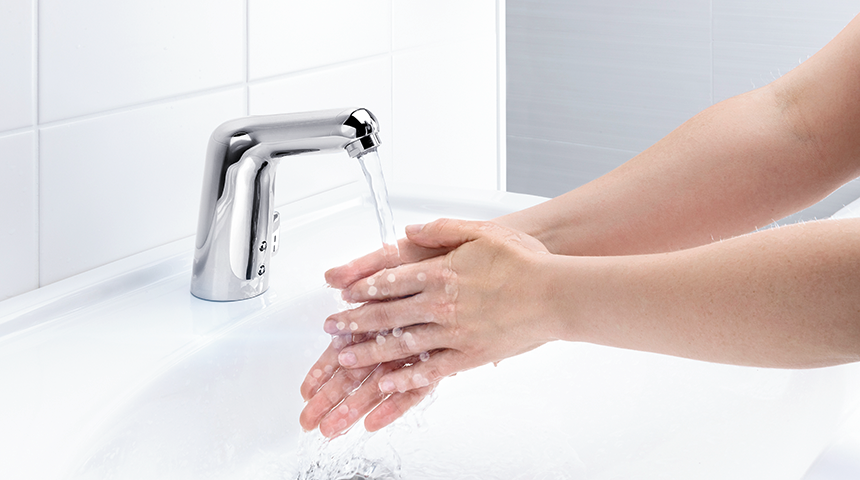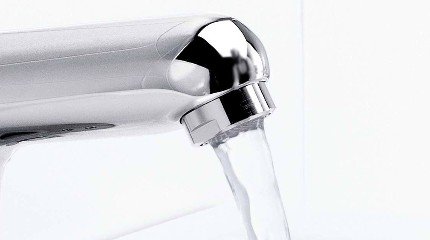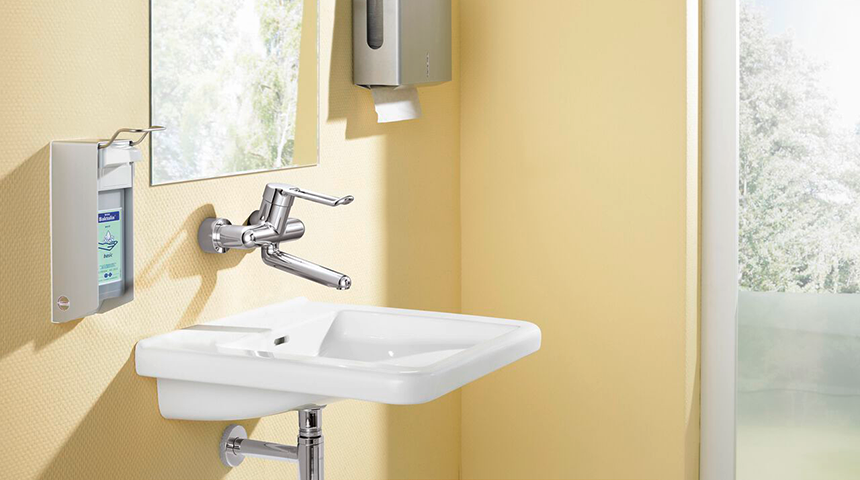Enriching the water stream with air is usually not problematic. However, as water and air are mixed, infectious bacteria such as legionellae could be released into the surrounding air via small droplets. This can significantly affect the safety and health of high-risk patients. Here’s all you need to know about laminar flow and why it’s a crucial component in special settings, such as medical facilities.

Aerated and spray streams are great solutions for adding extra comfort and functionality to your customers’ bathroom experience. But they are not for all environments.
In some cases, laminar streams might be the better choice to deliver on high-performance standards and provide the right level of hygiene.
But what exactly is laminar flow? In which cases do you need laminar flow devices? And what to pay attention to during installation?
Here’s all you need to know about laminar flow.
The ABC of laminar flow
Laminar flow vs. aerated stream: What’s the difference?
Aerated stream

Aerators are often found in residential faucet applications. They can induce up to 50% of air into the water which helps reduce water consumed per wash and produces an aerated water stream that is soft to the touch and non-splashing.
Laminar stream

Laminar flow devices produce a crystal-clear and non-aerated water stream. They’re usually used in healthcare and patient care facilities.
When do you need laminar flow?
Enriching the water stream with air is usually not problematic. In special buildings, such as hospitals and healthcare institutions, however, it can negatively affect the room’s required air quality.
As water and air are mixed, infectious bacteria that might dwell in the piping can be released into the surrounding air via small droplets. This can significantly affect the safety and health of high-risk patients.
Laminar flow is crucial to avoid the spreading of microbes and guarantee hygienic operation in any environment. That’s why, when installing faucets in high-sensitive environments, always make sure to go for faucets that integrate laminar flow as a standard feature. Designed for hospitals and care centers, Oras faucets, such as the Oras Medipro, offer a wide product range to choose from, so you can find the perfect fit for your installation.

Oras faucets for Health & Care all have laminar flow as a build-in feature.
What to pay attention to when installing or changing to laminar flow?
Most faucets designed for the health care sector come with a built-in laminar flow feature. This ensures quick and easy installation. Whether you're about to install a new faucet or replace an existing one, the installation setup stays the same as for regular faucets. The laminar flow feature is integrated into the faucet's composition which means that you don’t have to pay attention to any additional installation requirements.
However, in case you decide to only replace the faucet's aerator with a laminar flow one, here's a quick guide to help you during installation.
- Determine whether your faucet spout is female or male threaded. Whereas female-threaded spouts have their threads inside of the spout, male threads can be found on the outside of the spout.
- If your faucet has a male thread, you’ll need a female threaded laminar flow device and vice versa.
- Determine the faucet’s aerator housing size to find the right size of aerator you require. Just grab some spare change and compare these to the size of the threaded end of the outlet of the faucet spout.
-
- Diameter of a 1 Euro coin: Regular size aerator: 23.5 - 24 mm thread Male (M24) or 21 - 21.5 mm thread Female (F22)
- Diameter of a 5 Cent coin: Junior size aerator: 21.5 – 22 mm thread Male (M22) or 19-19.5 mm thread Female (F20)
Medical buildings have particularly high requirements for sanitary installations and laminar flow has become a must-have feature.
By checking on the sanitary requirements of your project, you can advise your customer on their faucet choice and ensure the water they use is not contaminated by bacteria or other particles flowing in the air.









